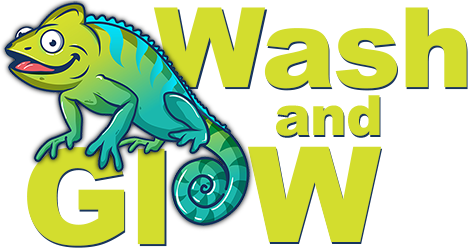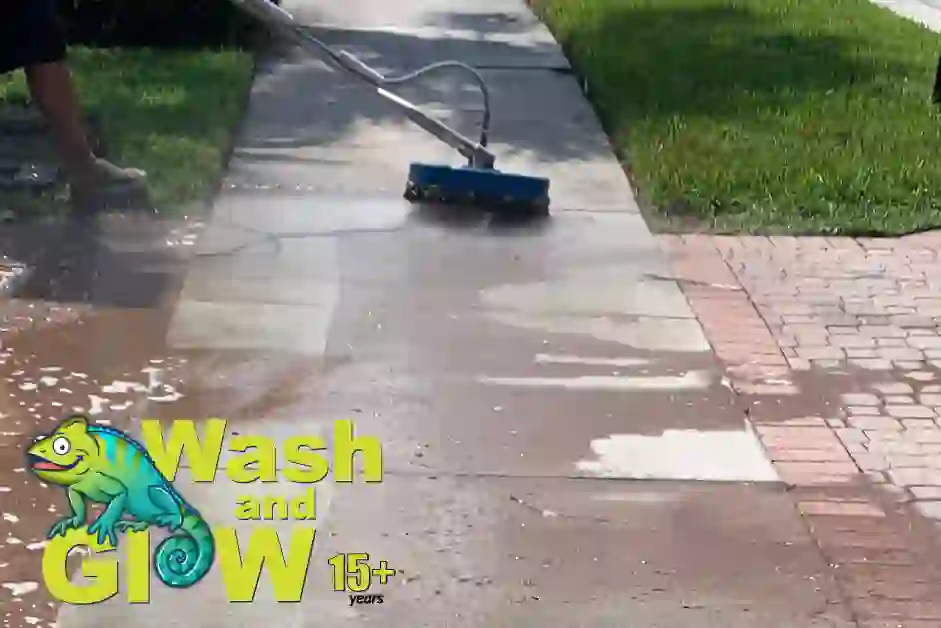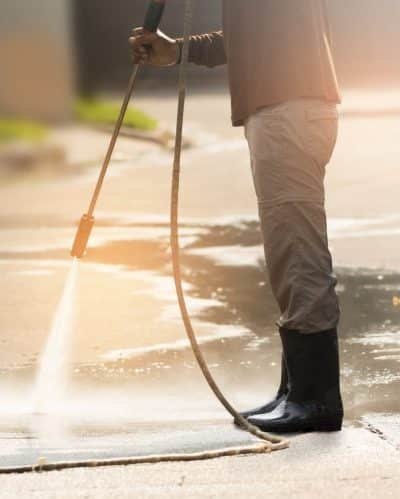Keeping sidewalks clean is essential for maintaining a safe, attractive, and functional environment. Sidewalks often accumulate dirt, grime, mold, mildew, and even oil stains over time, which not only detracts from their appearance but can also become a safety hazard. One of the most effective tools for restoring sidewalks to their original condition is a sidewalk pressure washer. This powerful cleaning device uses high-pressure water jets to remove even the toughest stains, leaving surfaces spotless and looking new.
In this article, we’ll dive into everything you need to know about sidewalk pressure washers. From understanding how they work and choosing the right one for your needs to tips for proper usage and maintenance, this guide will equip you with the knowledge you need to tackle dirty sidewalks effectively. Whether you’re a homeowner, a business owner, or a cleaning professional, mastering the use of a sidewalk pressure washer can save you time, money, and effort in maintaining clean and safe walkways.
Sidewalk pressure washers have become increasingly popular for their efficiency and eco-friendliness. They can reduce the reliance on harsh chemicals, minimize water waste through targeted cleaning, and deliver professional-level results. Whether you’re removing layers of dirt from residential pathways or tackling the high-traffic sidewalks of commercial properties, there’s a pressure washer to suit your needs.
This guide will cover five key aspects of sidewalk pressure washers: how they work, types available, features to consider, step-by-step cleaning techniques, and essential maintenance practices. Each section will provide in-depth insights, ensuring that you’re fully equipped to choose and operate the best sidewalk pressure washer for your needs. Let’s get started!
How Sidewalk Pressure Washers Work
The Science Behind Pressure Washing
At its core, a sidewalk pressure washer relies on the principle of pressurized water to dislodge dirt and grime from surfaces. By forcing water through a small nozzle at high pressure, these machines create a powerful stream capable of breaking apart tough stains and debris. The typical pressure ranges between 1,500 to 4,000 PSI (pounds per square inch), with higher pressures used for stubborn stains.
The velocity of the water, combined with its volume (measured in gallons per minute, or GPM), determines the cleaning power. Higher GPM ensures more water is delivered to the surface, while high PSI ensures stronger impact, making pressure washers ideal for breaking through dirt embedded in porous surfaces like concrete.
Key Components of a Pressure Washer
Pressure washers typically consist of several essential components:
- Motor or Engine: Powers the machine. Electric motors are quieter and suitable for residential use, while gas engines offer more power for commercial applications.
- Pump: Generates the water pressure. Axial cam pumps are common in consumer-grade models, while triplex plunger pumps are found in professional units.
- Nozzles: Control the spray pattern and pressure intensity. Common options include 0°, 15°, 25°, and 40° angles.
- Hose and Trigger Gun: Allow for controlled water delivery to the target surface.
Why Pressure Washing Is Effective for Sidewalks
Sidewalks are typically made of durable materials like concrete or pavers, which can withstand the high pressures generated by these machines. Unlike manual scrubbing, which requires significant effort, pressure washers can penetrate the tiny crevices in sidewalk surfaces to remove deeply embedded dirt, mold, and other contaminants. This makes them an efficient solution for restoring sidewalks to a clean, non-slippery state.
Types of Sidewalk Pressure Washers
Electric Pressure Washers
Electric pressure washers are lightweight, compact, and best suited for small-scale residential use. They generally produce pressures of 1,500 to 2,000 PSI and are easy to operate. Their quiet operation and low maintenance requirements make them an excellent choice for homeowners cleaning driveways and sidewalks.
However, electric models may struggle with heavy-duty tasks or expansive cleaning areas, as they often require a nearby power source and have lower overall power output compared to gas-powered units.
Gas-Powered Pressure Washers
For more demanding cleaning jobs, gas-powered pressure washers are the go-to option. These machines typically produce pressures ranging from 2,500 to 4,000 PSI, making them ideal for tackling stubborn stains, large sidewalks, and commercial properties.
While gas-powered washers are more powerful, they also tend to be heavier, noisier, and require regular maintenance. Their portability, however, makes them suitable for areas without easy access to electrical outlets.
Commercial and Surface Cleaners
Professional-grade pressure washers are designed for continuous use and can handle the toughest cleaning tasks. Many come with specialized attachments like surface cleaners, which are disk-shaped tools that ensure even cleaning over large areas. Surface cleaners are particularly effective for sidewalks, as they prevent streaking and reduce cleaning time.
Features to Consider When Choosing a Sidewalk Pressure Washer
Pressure and Water Flow
The PSI and GPM ratings are critical factors when selecting a pressure washer. For most residential sidewalks, a pressure washer with at least 2,000 PSI and 1.5 GPM is sufficient. For commercial or heavily soiled sidewalks, higher ratings—up to 4,000 PSI and 4 GPM—may be necessary.
Nozzle Attachments and Accessories
The versatility of your pressure washer largely depends on the nozzle options and additional tools available. Nozzles with varying spray angles allow you to adjust the intensity of the water jet for different tasks, while extensions, surface cleaners, and detergent tanks enhance functionality.
Durability and Build Quality
Choose a machine with sturdy construction, especially if you’re planning frequent use. Look for corrosion-resistant materials, heavy-duty hoses, and reliable pumps. Additionally, consider ergonomic features like comfortable handles and wheels for easy maneuverability.
Step-by-Step Guide to Cleaning Sidewalks
Preparing the Area for Pressure Washing
Before you begin, clear the sidewalk of any obstacles, debris, or loose dirt. Sweep the area thoroughly to remove loose particles that could be blown around during cleaning. If there are nearby plants or delicate surfaces, cover them to prevent damage from the high-pressure water.
Selecting the Right Settings and Nozzles
Attach the appropriate nozzle for the task at hand. A 25° nozzle is a good starting point for general cleaning, while a 0° nozzle should be used sparingly for tough stains. Test the pressure on a small, inconspicuous area before proceeding.
Effective Cleaning Techniques
Start at one end of the sidewalk and work methodically toward the other. Hold the nozzle at a consistent angle, approximately 6-12 inches away from the surface, and use smooth, overlapping strokes. For stubborn stains, apply a detergent solution designed for pressure washers, allow it to sit for a few minutes, and rinse thoroughly.
Maintenance Tips for Sidewalk Pressure Washers
Cleaning and Storing the Equipment
After each use, flush the pressure washer with clean water to remove any residual detergent. Drain the pump, hose, and nozzle to prevent damage from freezing during colder months. Store the machine in a dry, sheltered location.
Inspecting and Replacing Parts
Regularly check the condition of hoses, nozzles, and seals for wear and tear. Replace damaged parts promptly to ensure optimal performance and safety. Periodic oil changes and spark plug replacements are essential for gas-powered models.
Prolonging the Lifespan of Your Pressure Washer
Avoid running the pressure washer without water, as this can damage the pump. Use only approved detergents, and follow the manufacturer’s guidelines for maintenance and operation. Proper care and usage will significantly extend the lifespan of your sidewalk pressure washer.
FAQs
What pressure washer PSI is best for cleaning sidewalks?
A pressure washer with a PSI of at least 2,000 is recommended for residential sidewalks. For heavily stained or commercial sidewalks, a machine with 3,000 to 4,000 PSI is more effective. The higher pressure ensures deep cleaning, even for stubborn stains like oil or mold.
Can I use a pressure washer on all types of sidewalks?
Pressure washers are safe for most concrete and paver sidewalks. However, delicate materials like painted surfaces or certain types of decorative stone may require lower pressures to avoid damage. Always test a small area first to determine the appropriate settings.
What is the difference between a surface cleaner and a regular nozzle?
A surface cleaner is a specialized attachment designed for even, streak-free cleaning of large flat surfaces. It consists of a rotating spray bar enclosed in a disk-shaped housing. Regular nozzles, on the other hand, offer greater versatility for targeted cleaning but may take longer to cover large areas.
How often should sidewalks be pressure washed?
Sidewalks in residential areas can be pressure washed once or twice a year. High-traffic or commercial areas may require cleaning every few months to maintain safety and appearance. Frequency depends on factors like location, foot traffic, and environmental conditions.
Is it necessary to use detergents when pressure washing sidewalks?
While not always necessary, detergents can enhance the cleaning process by breaking down grease, oil, and other tough stains. Use a detergent specifically formulated for pressure washers and follow the instructions carefully to avoid damaging the machine or the surface.


